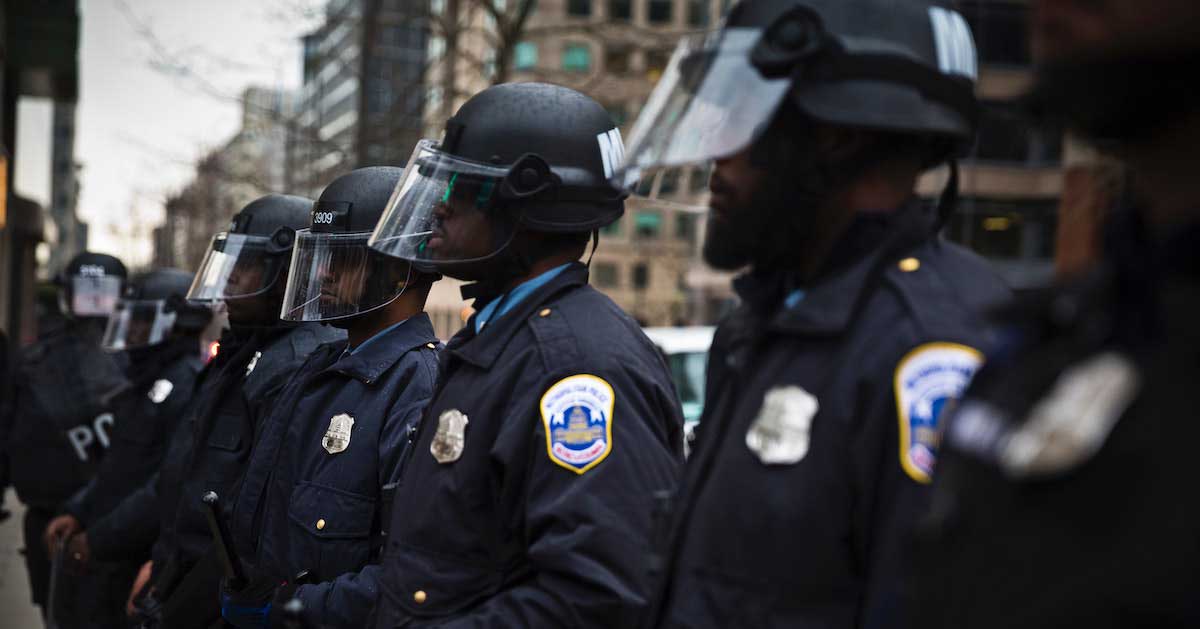COVID-19 prevention among live event participants is capturing the attention of planners as the event industry continues to recover from the pandemic.
But a second—and perhaps far deadlier—threat to event participants has emerged since the virus appeared in the U.S. in 2020.
Following the January 6 siege on Capitol Hill, event security experts warn that violent right-wing extremists—commonly known as “militiamen”—could target live events.
“If your event is relatively benign politically, you don’t face much of a threat from militiamen,” says Tony Alexiou, principal, The Minotaur Group. “But if your audience is perceived as leftist by any of these groups, I’d be concerned, because you fall into the category where militiamen could be looking at you. In their minds, you’re the enemy.”
Militia groups—along with the infamous “lone gunmen” and “mad bombers”—represent one variety of the domestic terrorist, according to the U.S. Department of Homeland Security. Terrorists are something the live event industry has been dealing with for years.
“Ours is a show that represents the broadcast industry—and we know there’s civil unrest and that these extremist groups could be trickling downhill our way.”
Militiamen pose a threat to live events, security experts say, because terrorists always prefer a “soft” to a “militarized” target.
Governments nationwide responded to the Capitol Hill insurrection by encircling militiamen’s likeliest targets—federal and state buildings—with heavily armed police and units from the National Guard, in effect militarizing the neighborhoods and driving ideologues intent on mayhem to seek out easier targets.
“As an event planner, you should be cognizant that what militiamen, ISIS and school shooters all have in common is the need to find a soft target,” says David Grantham of Grantham Strategies. “If you present yourself as demilitarized, you may be making yourself attractive to them.”
While “politically benign” events like trade shows and user-group meetings will likely escape militiamen’s sights, conventions and conferences that draw scientists, educators, academics, lawyers, activists and journalists—all proclaimed “snowflake enemies,” in the words of one militia group’s website—should be on alert.
One live event on alert is NAB Show, scheduled to take place in October in Las Vegas. When last held live in April 2019, the event drew 91,500 practitioners from the media and entertainment industries.
Emergency Preparedness for Events Certificate Program Planning the best event means preparing for the worst.
“We’ve been going through a full safety review and have gotten additional outside expertise to help us,” says Chris Brown, executive vice president, conventions and business operations, National Association of Broadcasters. “Ours is a show that represents the broadcast industry—big media—and we know there’s civil unrest and that these extremist groups could be trickling downhill our way. We can’t afford to take chances.”
Mark Herrera, director of education for the International Association of Venue Managers (IAVM), says meeting planners and service contractors “need to be aware there’s an imminent threat and remember that our facilities, due to layoffs, have become very anemic over the past year.”
Herrera met in late January with representatives of the Department of Homeland Security, whose newly appointed secretary, Alejandro Mayorkas, has called the threat posed by militiamen “persistent.” They told him planners should prepare now to secure their future live events against militiamen.
“If planners begin now for the restart of their live events, they’ll be better equipped to manage any situation once their events kick off,” Herrera says.
While relying on venues—although significantly downsized—to provide physical security is reasonable, planners and service contractors should consider training their frontline staff as well.
“These folks are the eyes and ears of every facility and need to be in tune with their environment and integrated into the emergency planning process from Day One,” Herrera says.
“The planner of a dental convention with no controversial speakers or controversial items on the agenda needn’t worry—no matter what’s happening in the rest of the country.”
IAVM can provide free resources and training, he says, “to help prepare event staffers to respond in the moment to physical threats.”
But threat-level awareness shouldn’t induce paranoia.
“We shouldn’t overthink the threat, especially for events that really are not that controversial,” says K. Campbell of Blue Glacier Security & Intelligence. “The planner of a dental convention, for example, with no controversial speakers or controversial items on the agenda, needn’t worry—no matter what’s happening in the rest of the country. The risk to the event is simply not that high.
“On the other hand, an accurate risk assessment is something you should always have for an event, as a normal thing.”
An accurate risk assessment identifies potential threats and—more importantly—evaluates the event’s actual vulnerability to those threats.
“A professional risk assessment isn’t expensive, but—no offense intended—most event planners don’t conduct one,” Campbell says. “Having one in your back pocket is not only good business practice, but may reduce your liability, were something to happen at your conference and the lawsuits start to fly.”
“Yes, militias have been increasing their activities, but violence in America—including the January storming of the Capitol—has remained predictable in nature,” says Elizabeth Kriesten, director of Bridges Across the Divide. “If you look at the origin myths of the militias, they target specific groups and give themselves specific goals that allow them to see themselves as ‘the very good fighting the very evil.’
“Nothing about their origin myths or ideology suggests there’s a risk to large events meant for civilians. They’re targeting the government, where they think all the evil is originating, and trying to trigger an apocalyptic race war. To respond to recent events like January 6 by battening down the hatches would be to respond to the wrong signals.”
ADVICE FROM EVENT-SECURITY EXPERTS
“Track social media for the month or two leading up to your event to see if there’s any chatter that could signal someone is planning something. There may be a bunch of guys who have a bone to pick with you and, if they’re planning something, they’re not going to be quiet. They’re going to want to recruit people. That’s your first indication you should go to the FBI.” - Tony Alexiou, principal, The Minotaur Group
“We have a saying in the military: You want to be ‘left of boom.’ Right of boom is ‘after the fact.’ To stay left of boom, make sure you’re monitoring the web before your event, looking for anyone who’s expressing threats. And engage with local security professionals to learn what they’re saying about activities in the city. Any planners working with government officials and government contractors should be extremely proactive about online monitoring and onsite protection.” - David Grantham, Grantham Strategies
“What are the steps to becoming prepared? No. 1 is to tap into all the free resources available: task forces, working groups and town hall meetings. As an event planner, I would be involved in those conversations in order to understand what the safety and security challenges really are.” - Mark Herrera, director of education, IAVM
“A lot of times people just focus on threats. Yes, the January 6 insurrection was a threat. But what’s your vulnerability to that threat? Once you start breaking risk into its components—threats, vulnerability, impacts—you might realize, ‘Well, there’s a general threat of domestic terrorism, but the terrorists don’t care about our organization.’ Your risk should always be broken down into its components when you’re assessing your needs for protection. Borrowing from live concerts and special events, I like to refer to the three Ps: protect your pocketbook, protect your patrons and protect your performers.” - K. Campbell, Blue Glacier Security & Intelligence
Photo by Adam Bezer on Unsplash



